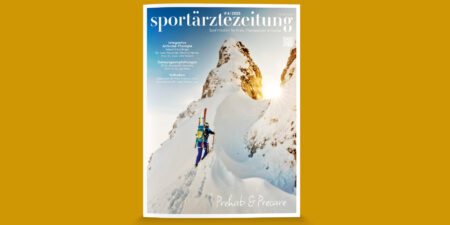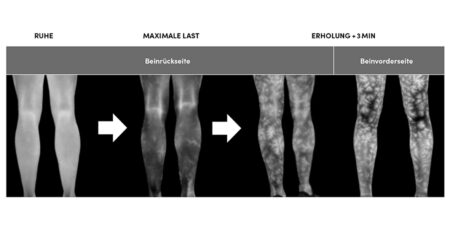FIFPRO has recently released the Player Workload report of FIFA World Cup Qatar 2022, a report analyzing the increased workload of footballers who participated at Qatar 2022. The report was mainly based on the methodology and metrics of the FIFPRO Player Workload Monitoring (PWM) platform and FIFPRO Player IQ in collaboration with Football Benchmark. The FIFA World Cup was a highly demanding tournament for the players with various factors that have aggravated the workload demands on the players to extreme levels.
Insufficient preparation and recovery time for players
The 2022 world cup was the first edition of the tournament held during the winter. Most players arrived only few days before the tournament, expected to perform at their highest level after a demanding period of club matches in their domestic leagues and continental competitions.
- Less than 50 % of players believed they had sufficient time to prepare for the 2022 FIFA World Cup, espe-
cially those whose teams progressed to at least the quarter-finals. - 75 % of surveyed players from these teams reported inadequate time to prepare for the tournament.
- Around 68 % of the players stated that optimal preparation time should be between 14 – 21 days (Fig. 1& 2).


Condensed match schedule result in an intense workload on the players
Due to the winter timing, the World Cup had a compressed schedule with 64 matches played in just 29 days. This put intense physical demands on players. Even with 32 participating nations, the tournament became the shortest one since the 1978 tournament which featured only 16 teams. Players at the top of the game were pushed to their limits as many of them experienced an alarming increase in their already heavy workload without having sufficient time to recover between the games (Fig. 3).

Impactful extended stoppage time
During the World Cup, players experienced extended stoppage times as referees were instructed to follow a new interpretation. During this immensely congested schedule, this change led to several matches that were unusually long, often exceeding 100 minutes in length.
This increase in playing time may seem small, but it could have a significant impact on the players’ workload, rest and recovery and conditioning. By requiring players to spend more time on the field, it could put additional strain on their bodies and potentially increase the risk of injury. If this new interpretation was adopted more widely across all competitions, players would be forced to cope with longer effective playing times amid their already overloaded match calendars. The average stoppage time was around 11.6 minutes at the 2022 tournament (excluding matches that went into extra time). This is a significant, almost 60 % increase compared to the World Cup in Russia four years prior. 53 % of surveyed players liked the new interpretation of stoppage time rules at the FIFA WORLD CUP™ but stressed that widespread adoption could be only supported if the extended playing time impact was accounted for in fixture planning.
Inadequate recovery and its impact on player’s physical and mental health
One of the main challenges for players after the conclusion of the 2022 FIFA World Cup™ was the short turnaround between the end of the tournament and the resumption of club football. The majority of the players surveyed (61 %) indicated that they would like to have had 14 – 21 days for recovery before returning to play with their clubs. 67 % of Germany-based players felt positive about the time for recovery, as the Bundesliga resumed only in mid-January. Only 38 % of England-based players felt that they had enough time for recovery. The consistent imbalance between workload and recovery is likely to lead to increase risk of injuries, both physical and mental, to players. Mental fatigue, 20 % of players reported experiencing extremely high levels of mental or emotional fatigue at this time of the season (January) compared to usual at this point in a regular season with a further 23 % feeling more mental fatigue than usual (Fig. 4).

Physical fatigue, 44 % of players experienced extreme or increased levels of fatigue compared to how they usually feel at this time of the season (January). Unfortunately, as we have seen in the post-tournament period, this accumulated fatigue has likely contributed to a number of leading players suffering soft-tissue injuries as extreme fixture congestion continues (Fig. 5). Injury risk, according to the FIFPRO survey, 52 % of players reported suffering an injury or feeling more susceptible to injury due to the congested schedule. Interestingly, this trend was more prominent among non-first time World Cup players, who tend to be older, more experienced, and have a better understanding of their bodies, with 75 % of them reporting such injuries or susceptibility.

Since the start of the World Cup, there have been 66 players who suffered an injury, according to media reports. This equates to approximately 8 % of all players who participated at the tournament in Qatar. These players had 76 injuries in total as some recorded more than one. It is also strongly assumed that minor injuries often go unreported, hence the actual number could even be higher.
58 % of reported injuries occurred during the World Cup, while 42 % happened after the conclusion of the tournament. Key players for both club and country such as Virgil van Dijk (Liverpool FC), Aurelien Tchouameni (Real Madrid CF), Marcelo Brozovic (FC Internazionale Milano), Angel Di María (Juventus FC) all picked up an injury very soon upon returning to their clubs (Fig. 6).

Burden of player participation on leagues and clubs
For the 2022 World Cup, 55 different leagues had at least one player at the tournament. The Premier League is the standout in this ranking: 13 players from the English top division accumulated more than 33,000 minutes during the tournament. This is almost equal to the combined record of the second and third ranked leagues (Spanish La Liga and Italian Serie A). Subsequently, this places a significant workload on players during the season. On top of to their regular workload, they were now subjected to a mid-season interruption and additional matches at the World Cup.
Clube most affected by World cup participation are Manchester city who had 16 players reached close to 5,200 combined World Cup minutes; they are followed by FC Barcelona with 4,741 minutes (17 players) and Manchester United FC with 4,364 minutes (14 players).
Conclusions of the FIFPRO Player Workload Monitoring (PWM) Report
- The unprecedented winter schedule of the 2022 FIFA World Cup™ posed many challenges for players, especially concerning the short turnaround between the end of the tournament and the resumption of club football. Several players were subject to extremely limited rest and recovery times, increasing the risk of injury and hinder performance optimisation.
- 86 % of participating players want a preparation period of at least 4 days going into the World Cup, with the vast majority seeking 14 – 21.
- 52 % of players reported an injury or were concerned about the likelihood of getting injured due
to the congested calendar. - Only 11 % of players favour the November / December timing of the World Cup.
- Those Findings should be considered by the FIFA and tournament organizers in future tournaments and to be aware not only of timing and length of the tournament but also to listen to the player’s voice.
Autoren
is Specialist Physical medicine and rehabilitation (MBBS, M.SC.) , Dubai Physiotherapy and Rehabilitation center (DPRC), Dubai health Authority. He ist Assistant lecturer Ain Shams University, Cairo, Egypt and also Member in the Egyptian Society of Physical medicine and Rehabilitation, in Emirates society of rehabilitation and sports medicine and in International Society of Physical medicine and Rehabilitation (ISPRM).




